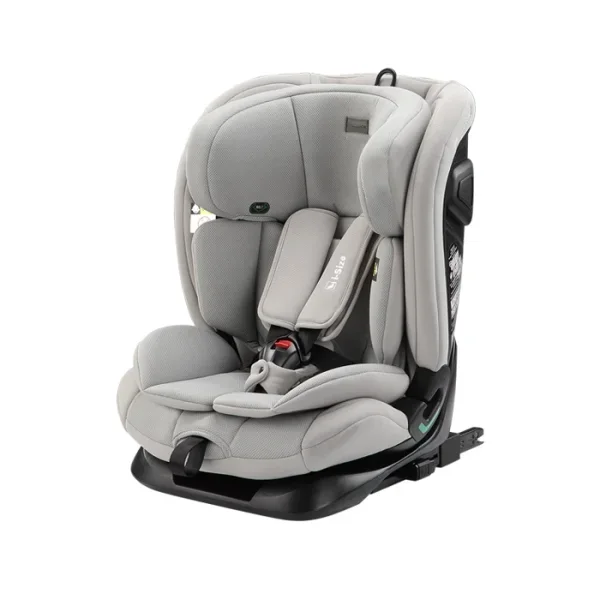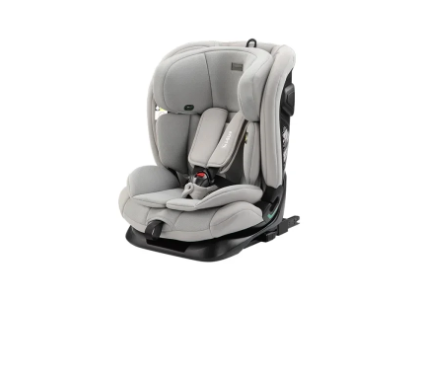As a new parent, choosing the right infant car seat can be overwhelming. With so many options and safety features to consider, it's important to do your research before making a purchase. After all, an infant car seat is one of the most crucial investments you'll make for your baby's safety on the road. In this blog post, we'll guide you through the different types of infant car seats available and help you understand the key safety features that are essential for protecting your little one in case of an accident. Plus, we'll share some tips on how to properly install and use an infant car seat so you can have peace of mind knowing that your child is safe and secure during every ride.
The different types of infant car seats
When it comes to infant car seats, there are three main types you can choose from: rear-facing only car seats, convertible car seats, and all-in-one car seats. Rear-facing only car seats are designed for infants and can accommodate babies up to 35 pounds or more depending on the model. They're lightweight and easy to install, making them a popular choice among new parents.Convertible car seats can be used both rear-facing and forward-facing as your child grows. They have higher weight limits than rear-facing only car seats but tend to be bulkier and heavier. All-in-one car seats offer the most versatility since they can be used from infancy until your child is ready for a booster seat.It's important to note that each type of infant car seat has its own set of advantages and disadvantages, so it's crucial to consider your needs before making a purchase decision. For instance, if you plan on using public transportation or frequently switching between cars, a lightweight rear-facing only seat might be best suited for you whereas if you want an investment that will last longer then purchasing an all-in-one seat may save money in the long run.

Key safety features to look for
When choosing an infant car seat, safety should be your top priority. Here are some key safety features you should look for:
Firstly, make sure the car seat has a 5-point harness system that secures your baby at the shoulders, hips and between the legs. This offers maximum protection in case of a crash.
Secondly, choose a car seat with side-impact protection. This feature helps to protect your baby's head and chest from impact in case of a collision.
Thirdly, ensure that the car seat is compatible with your vehicle's LATCH (Lower Anchors and Tethers for Children) system. This will help to ensure proper installation and reduce any chances of incorrect usage.
Fourthly, consider purchasing an infant car seat with adjustable recline positions. Proper recline angles help to keep newborns' airways open as they cannot support their own heads yet.Check if the car seat has been certified by independent organizations such as NHTSA (National Highway Traffic Safety Administration) or JPMA (Juvenile Products Manufacturers Association). These certifications indicate that the product meets certain safety standards set by these organizations.Remember to do thorough research on different infant seats before settling on one for your child's safety!
How to install an infant car seat
Installing an infant car seat is crucial to ensure your baby's safety while traveling. Before installing the car seat, make sure to read the manufacturer's instructions carefully.The first step in installing an infant car seat is choosing the right location in your vehicle. Most cars have dedicated latch anchors or a locking seatbelt system that you can use for installation.Once you have chosen the location, attach the base of the car seat using either latch connectors or a locking mechanism on your vehicle’s seat belt system. Make sure to hear an audible click when securing it properly.Next, adjust the recline angle according to your baby’s age and weight. This ensures that their head isn’t slumping forward when they’re sleeping during long journeys.After adjusting the recline angle, secure your child into their harness by pulling it snugly around their body and buckling up everything correctly until there are no twists or slack left in straps.Test out all parts of the installation again by giving them gentle tugs and pulls from different angles before starting on each journey with your little one securely fastened inside!
Tips for using an infant car seat
When it comes to using an infant car seat, there are a few tips that can help ensure your child's safety. Firstly, make sure you always buckle up the harness snugly and correctly every time you use the car seat. This means ensuring that the straps are at or below your baby's shoulders, and that they fit snugly without being too tight.Additionally, make sure to never put anything bulky or loose in between your baby and the harness straps. This could include things like winter coats or blankets - instead, dress your baby warmly and tuck a blanket around them after buckling them into the car seat.
Another important tip is to make sure you're using the right type of car seat for your child's age and size. Infant car seats are specifically designed for newborns up until around 12 months old (or until they reach certain height/weight limits), so be sure not to transition out of this type of seat before it's appropriate.Remember that infants should always ride rear-facing in their car seats until at least 2 years old (or as long as possible if their convertible car seat allows). This position offers optimal protection for their developing necks and spines in case of an accident. By following these tips, you'll be able to use your infant car seat with confidence!

Conclusion
Choosing the right infant car seat is crucial for your baby's safety on the road. With so many options available, it can be overwhelming to decide which one to pick. The key is to prioritize safety features above all else.Remember, ensuring your baby's safety during travel requires careful thoughtfulness about each aspect involved - including choosing their first mode of transportation!Please contact us,if you need.sabrina@nbwelldon.com

